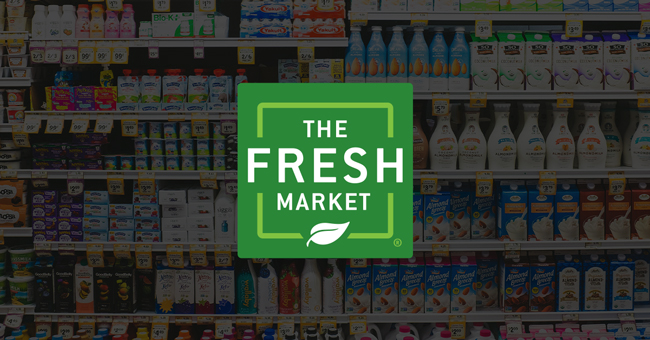
North Carolina-based grocer The Fresh Market filed for an initial public offering this month for the second time in the company’s almost 40-year history. This second IPO could bring significant changes to the grocer’s position in the retail landscape, forcing them to optimize operations at the expense of local and emerging brands.
The Fresh Market originally went public in 2010, but was bought out by New York-based private equity firm Apollo Global Management in 2016 for $1.36 billion. Over the past few years, the company has improved its business model, technology, and supply chain, making now the right time for the IPO, said grocery retail industry expert Brittain Ladd.
“They realized they had to become a better company and they also realized that grocery is very strategic,” said Ladd. “Interest in groceries has really expanded because of Wall Street and venture capital’s interest. It’s one of those things that they look at the industry and available cash being committed and they see it like this really is an opportunity.”
The Fresh Market currently operates 160 stores in 22 states up and down the East Coast and stretching into the Midwest. In 2018, the grocer closed 15 stores – including its three California locations. Ladd believes additional significant changes to the company will be necessary if The Fresh Market is going to survive as a public entity.
“Everything they do well is going to be recognized, but everything they do poorly will be criticized,” explained Ladd. “When you are a public grocery retailer, your same store sales, your sales per square foot, customer traffic – all of that is measured and is public information. The challenge for The Fresh Market is they must execute. Because The Fresh Market failed at this already, they have to execute flawlessly. That isn’t hyperbole – it’s really a fact.”
Strategic changes by the company as a result of the second public offering could also alter the entry path for emerging brands looking to launch at The Fresh Market, Ladd believes. Originally, The Fresh Market was modeled after European-style open air markets, making it an optimal, accessible place for new or local brands to test their product at retail.
Today, that single market has grown into a grocery chain with “a farmer’s market atmosphere, complete with locally-grown produce,” according to its website. However, with the IPO on the horizon, Ladd said the grocer needs to prioritize customer experience both in-store and online rather than making itself a launch pad for entrepreneurs. While variety can initially draw shoppers in, Ladd believes smaller-format stores must be “disciplined” in their product selection.
“They need to make sure they are selecting the best of the best to put on those shelves,” said Ladd. “The goal is to turn that inventory quickly. The last thing they should do is confuse the customer by offering too many products.”
According to Ladd, it’s likely The Fresh Market will follow the model set by Whole Foods after that chain was bought out by Amazon – favoring brands that could be rolled out regionally or nationally rather than launching on a store-by-store basis. Flawless execution, he suggests, means that The Fresh Market needs to go beyond their focus on freshness and suggests online, micro-fulfillment centers where they can offer products for easy, curbside pickup without sacrificing shelf space in-store.
Although Ladd says he believes The Fresh Market can be successful at generating a significant public offering this time around, he ultimately believes that growth opportunities for the company could lie elsewhere.
“More interesting would be for The Fresh Market to reach out to Sprouts and talk about a merger or an acquisition,” said Ladd. “When I look at The Fresh Market, they have their critics no doubt, but I think now is the time for The Fresh Market to really think big.”
The Fresh Market declined to comment on the news.